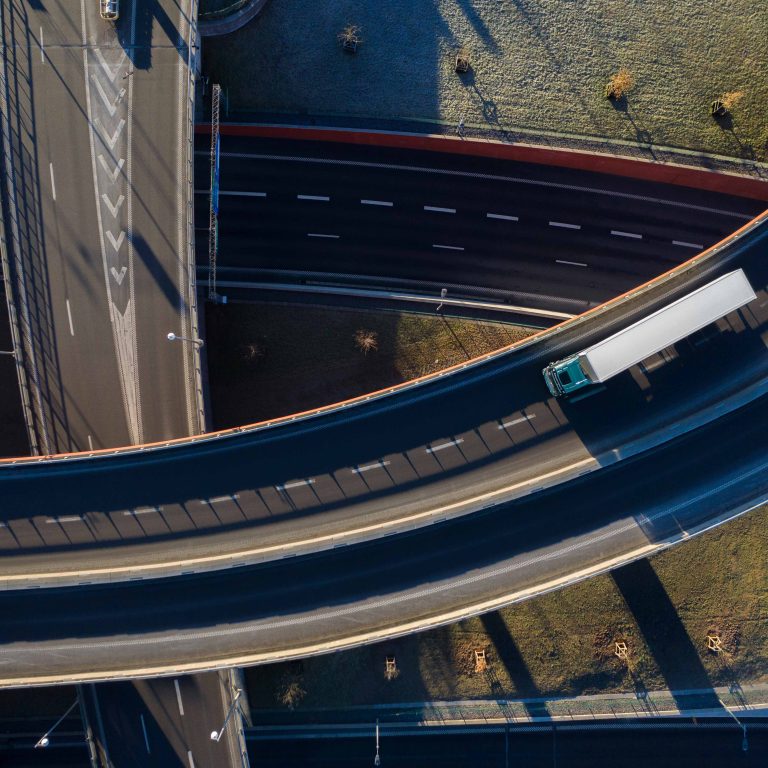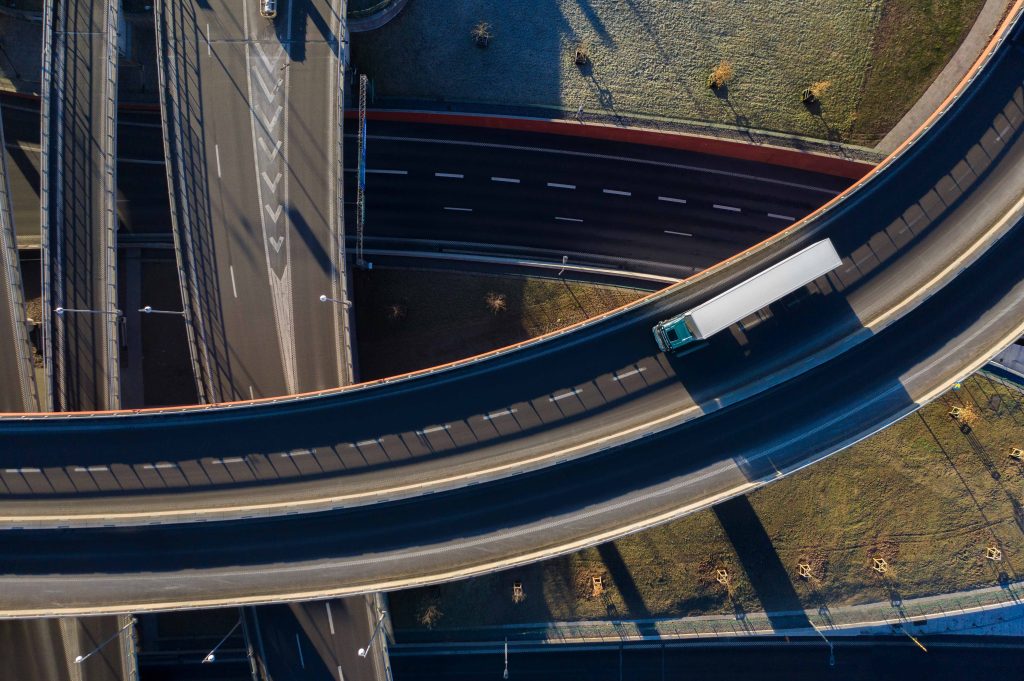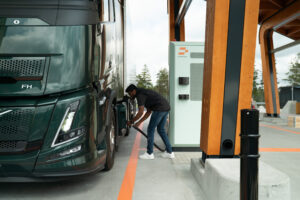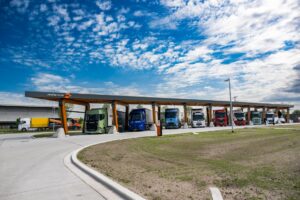As part of our mission to accelerate and support the transition to zero-emission heavy-duty vehicles in Europe, our network rollout strategy focuses on building confidence and trust in the market.
For us, this means that a truck must always be able to charge when it needs to – there should be no loss of productivity due to chargers malfunctioning or being occupied. That is our promise.
In order to achieve this, we will:
- Always build our charging hubs ahead of demand. This means that the chargers should be in place before they are needed. We will take a data-driven approach to this, adapting to the growth in the market.
- We will build our charging hubs alongside the busiest highways and close to large transport hubs, initially focusing on those highways and hubs where we expect battery electric trucks to be deployed first.
- We will build modularly. This means that we will start with small sites which are expanded as the number of electric trucks increases.
Our initial focus will be on the Netherlands, Belgium, Germany, France, Italy, Spain, Sweden, and Norway. We will also build charging locations in the United Kingdom, Denmark, Poland, Austria, Switzerland, and Portugal in the coming five years.
We aim to be transparent about our network rollout, including announcing future locations as early as possible, to enable transport companies to take those locations into account when planning the electrification of their truck and coach fleets.



